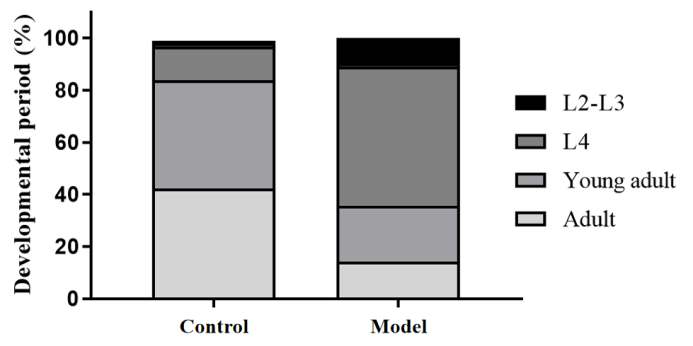Developmental Toxicity Analysis Services
Our developmental toxicity evaluation service focuses on assessing the effects of chemicals or environmental factors on the critical stages of C. elegans development, especially the toxic effects at key stages such as embryonic development, larval growth and adult maturation. This services help identify potential risk and provide a scientific basis for evaluating the environmental and ecological impacts of substances. It has wide applications in drug screening, environmental pollutant monitoring and risk evaluation for new chemicals.
Our C. elegans developmental toxicity assessments include but are not limited to:
ØEmbryo Development Assessment
Analyze the toxic effects of chemicals on embryos by monitoring abnormalities such as delayed development, deformities, or lethality at eggs or early embryos
ØLarval Growth and Development Analysis
Evaluate whether the chemical substances affect the larval growth (L1-L4 stages), observing changes in growth rate, body length, morphological changes, etc. as well as signs of growth stagnation, deformity or death occurs.
ØNormal Development Evaluation
Evaluate the progression from larvae to adults, checking for delays, abnormal sex ratios, body shape abnormalities, or other developmental issues .
ØPhysiological and Phenotype Observation
Complement morphological analysis with behavioral tests (eg: motor ability, feeding behavior, etc.) or physiological indicators (eg: metabolic activity) to determine whether there are toxic substances affecting the overall physiological health and toxicity impact.

Fig.1 Effects of a certain compound on the development rate of Caenorhabditis elegans


